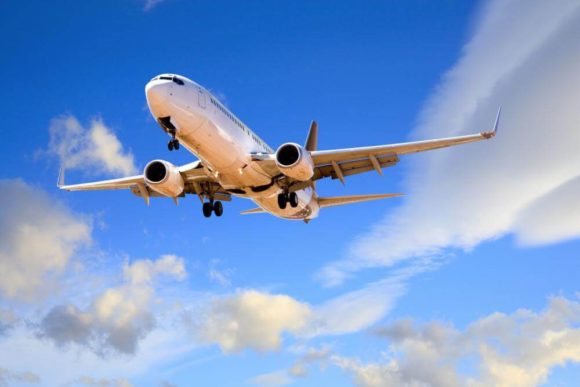WASHINGTON/SEATTLE — Boeing Co won approval on Wednesday from the U.S. Federal Aviation Administration to fly its 737 MAX jet again after two fatal crashes that triggered two years of regulatory scrutiny and corporate upheaval.
FAA Administrator Steve Dickson signed an order lifting the 20-month flight ban, the longest in commercial aviation history, and the agency released details of the software upgrades and training changes it is mandating for the plane to fly again with passengers.
The 737 MAX crashes in Indonesia and Ethiopia killed 346 people within five months in 2018 and 2019 and triggered a hailstorm of investigations, frayed U.S. leadership in global aviation and cost Boeing some $20 billion.
“We’ve done everything humanly possible to make sure” these types of crashes do not happen again, Dickson told Reuters, saying he felt “100% confident” in the plane’ssafety.
The FAA’s move means that U.S. airlines can start flying commercially once they have completed the FAA’s requirements, though flights elsewhere will depend on approval from other regulators across the globe.
In a show of independence, Canada and Brazil said on Wednesday they were continuing their own reviews but expected to conclude the process soon, illustrating how the 737 MAX crashes upended a once U.S.-dominated airline safety system in which nations large and small for decades moved in lock-step with the FAA.
The U.S. planemaker’s best-selling jet will make its comeback facing headwinds from a resurgent coronavirus pandemic, new European trade tariffs and mistrust of one of the most scrutinized brands in aviation.
The 737 MAX is a re-engined upgrade of a jet first introduced in the 1960s. Single-aisle jets like the MAX and rival Airbus A320neo are workhorses that dominate global fleets and provide a major source of industry profit.
Boeing shares were up 2% at $214.21. Shares of major U.S. airlines rose.
When it does fly, Boeing will be running a 24-hour war room to monitor all MAX flights for issues that could impact the jet’s return, from stuck landing gear to health emergencies, three people familiar with the matter said. Families of the Ethiopian crash victims said in a statement they felt “sheer disappointment and renewed grief” following the FAA’s decision to return the aircraft to service.
“Our family was broken,” Naoise Ryan, whose 39-year-old husband died aboard Ethiopian Airlines flight 302, said on Tuesday.
Long Runway Ahead
While regulators were quick to ground the plane globally after the second MAX crash in March 2019, the process to put the planes back in the air will be long and complex.
The FAA is requiring new pilot training and software upgrades to deal with a stall-prevention system called MCAS, which in both crashes repeatedly and powerfully shoved down the jet’s nose as pilots struggled to regain control.
U.S. airlines with 737 MAX jets said on Wednesday they would complete the FAA’s maintenance and training requirement as they gradually return the plane to schedules that have been drastically reduced in the pandemic.
American Airlines plans to relaunch the first commercial MAX flight since the grounding on Dec. 29, followed by United Airlines in the first quarter of 2021 and Southwest Airlines in the second quarter.
Meanwhile, Alaska Airlines said it expected to receive its first 737 MAX aircraft early next year and begin passenger service in March.
The FAA, which has faced accusations of being too close to Boeing in the past, said it would no longer allow Boeing to sign off on the airworthiness of some 450 737 MAXs built and parked during the flight ban. It plans in-person inspections that could take a year or more to complete, prolonging the jets’ delivery.
A humbled Boeing is scrambling to keep up maintenance and find new buyers for many of its mothballed 737 MAXs after receiving cancellations from their original buyers. Demand is further sapped by the coronavirus crisis.
For a graphic on 737 MAX orders and deliveries to airline customers, click here.
Even with all the hurdles, resuming deliveries of the 737 MAX will open up a crucial pipeline of cash for Boeing and hundreds of parts suppliers whose finances were strained by production cuts linked to the jet’s safety ban.
Numerous reports have faulted Boeing and the FAA on the plane’s development. A U.S. House of Representatives report in September said Boeing failed in its design and development of the MAX, and the FAA failed in its oversight and certification.
It also criticized Boeing for withholding crucial information from the FAA, its customers, and pilots including “concealing the very existence of MCAS from 737 MAX pilots.”
The chief executive of Boeing urged staff to speak up whenever they see behavior going against values of safety, quality and integrity.
“We have implemented a series of meaningful changes to strengthen the safety practices and culture of our company,” Dave Calhoun told employees in a letter.
The U.S. Senate Commerce Committee on Wednesday voted unanimously to approve a bill to reform how the FAA certifies new airplanes. The House unanimously passed a reform bill on Tuesday.
Boeing faces lawsuits from crash victim families.
Was this article valuable?
Here are more articles you may enjoy.


 A California City Is Pioneering Urban-Scale Insurance for Climate Disasters
A California City Is Pioneering Urban-Scale Insurance for Climate Disasters  North Sea Ship Collision Could Cost Insurers up to $100M, Hitting Marine Line Profits
North Sea Ship Collision Could Cost Insurers up to $100M, Hitting Marine Line Profits  State Farm Stronger as Underwriting Losses Shrink—But Not in California
State Farm Stronger as Underwriting Losses Shrink—But Not in California  China’s Auto Titans Push for AI, Flying Cars and New Plates
China’s Auto Titans Push for AI, Flying Cars and New Plates 